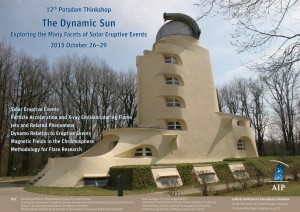Coronal Mass Ejection-Flare Relationship and the Topology of the Erupting Field
Bernhard Kliem (University of Potsdam, Institute of Physics & Astronomy)
Abstract. Observations of coronal mass ejections (CMEs) and solar flares often show a correlation between the acceleration of the ejecta and the plasma heating and particle acceleration signified by the soft and hard X-ray emissions of the associated flare (the latter are thought to result from magnetic reconnection). This finding has stimulated the discussion of the CME-flare relationship, but at the same time it has made it difficult to find a conclusive answer as to whether an ideal MHD instability or magnetic reconnection is the prime cause of the eruptions. Numerical simulations of unstable flux ropes will be presented which successfully model CMEs. Some of these show a high degree of synchronization between the initial exponential acceleration of the flux rope, due to the ideal MHD instability, and the rise of reconnection. However, in others the reconnection sets in with a delay which can extend up to the phase after the flux rope’s acceleration peak. In addition, in simulations of fast eruptions, the reconnection flows generally lag behind the motions driven by the ideal instability, especially when the flux rope rise velocity nears the saturation phase. These properties suggest that the ideal MHD process is the primary driver of the coupled CME-flare phenomenon. The strong differences in the degree of synchronization are related to the magnetic topology prior to the eruption. Observations of CME vs. flare timing thus allow to infer which of the two basic flux rope topologies is relevant in a given event.
Contributed Talk

Write a comment Close comment form